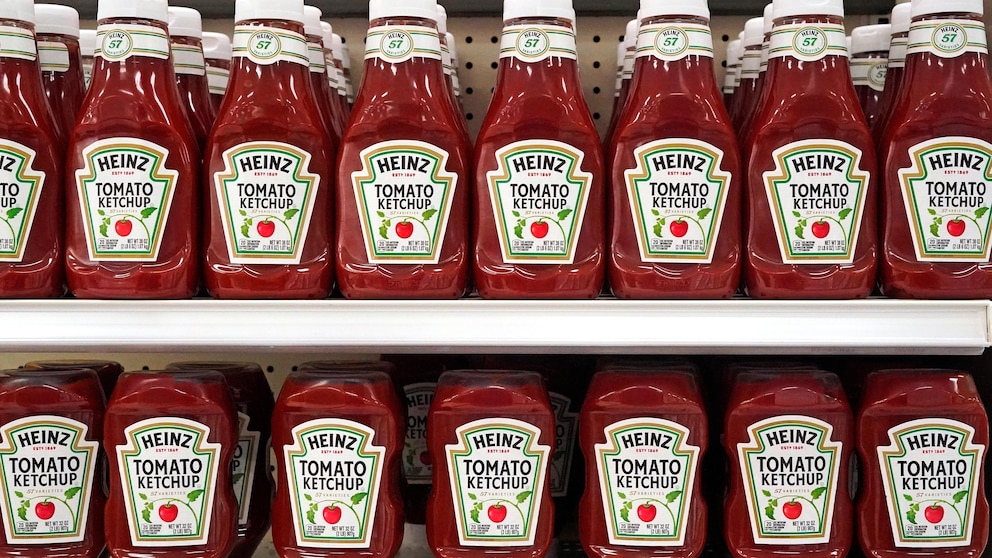






U.S. wholesale prices rose last month at the fastest pace since April, suggesting that inflationary pressures remain despite a year and a half of higher interest rates
ByPAUL WISEMAN AP economics writer
October 11, 2023, 8:42 AM

File – Heinz ketchup is displayed in a Target store in Upper Saint Clair, Pa., on Friday, July 7, 2023. On Wednesday, the Labor Department releases producer prices data for September. (AP Photo/Gene J. Puskar, File)
The Associated Press
WASHINGTON — U.S. wholesale prices rose last month at the fastest pace since April, suggesting that inflationary pressures remain despite a year and a half of higher interest rates.
The Labor Department reported Wednesday that its producer price index — which measures inflation before it hits consumers — climbed 2.2% from a year earlier. That was up from a 2% uptick in August.
On a month-to-month basis, producer prices rose 0.5% from August to September, down from 0.7% from July to August.
Excluding volatile food and energy prices, so-called core inflation rose 2.7% in September from a year earlier and 0.3% from August. The Federal Reserve and many outside economists pay particular attention to core prices as a good signal of where inflation might be headed.
Wholesale prices have been rising more slowly than consumer prices, raising hopes that inflation may continue to ease as producer costs make their way to the consumer. But Wednesday’s numbers, driven by an uptick in the price of goods, came in higher last month than economists had expected. Wholesale energy prices surged 3.3% from August to September, and food prices rose 0.9% after tumbling 0.5% from July to August.
Last year, inflation reached highs not seen in four decades, prompting the Fed to raise interest rates aggressively. The central bank has boosted its benchmark rate 11 times since March 2022. Those higher borrowing costs have helped cool inflation and slow a still-solid job market.
There are growing expectations that the Fed may decide to leave interest rates alone for the rest of the year. On Monday, two Fed officials suggested that the central bank may leave its key rate unchanged at its next meeting in three weeks, helping touch off a rally in bonds and stocks.
Rubeela Farooqi, chief U.S. economist at High Frequency Economics, said last month’s higher producer prices “likely do not change the outlook for Fed policy. Our baseline remains that rates are at a peak. For the Fed, geopolitical developments will be an additional risk factor which will likely keep policymakers proceeding cautiously going forward.″
In the meantime, the economy has remained sturdier than expected. Optimism is rising that the Fed may pull off a ”soft landing” — raising rates just enough to tame inflation without tipping the economy into a deep recession.
On Thursday, the Labor Department will issue its closely watched consumer price index for September. Last month, the department reported that compared with 12 months earlier, core consumer prices in August rose at the smallest pace in nearly two years.
Related Topics


